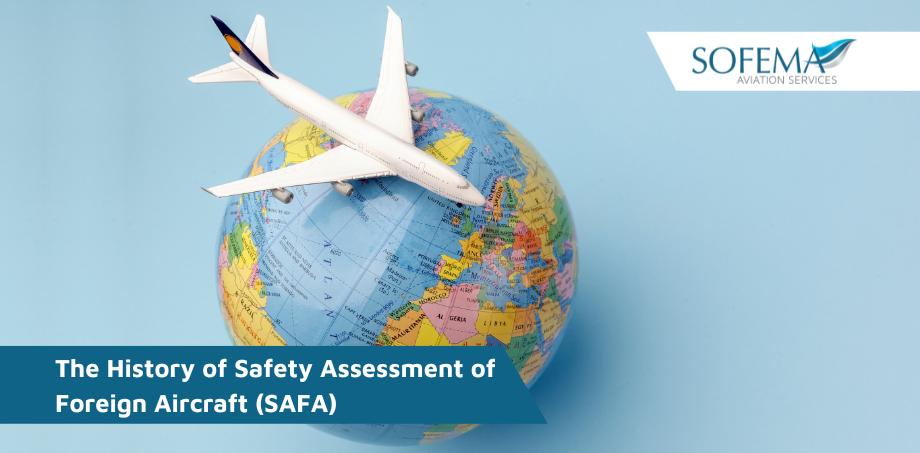The History of Safety Assessment of Foreign Aircraft (SAFA) – considerations by Sofema Aviation Services (SAS) www.sassofia.com
Introduction
The SAFA programme started in 1996 and is focused on assessing the level of compliance with the International Civil Aviation Organisation (ICAO) standards of the airlines operating at the various airports which are within the jurisdiction of the European Aviation Authorities.
- The objective is to raise the overall safety level of airlines by requiring correction and prevention of identified discrepancies with ICAO standards.
Note: EASA standards may be more stringent than other regulatory standards whereas ICAO SARP are essentially baseline standards agreed by the signatories to the UN.
- The legal basis for the SAFA programme is the Chicago Convention, where article 16 states that “the appropriate authorities of the contracting State shall have the right, without unreasonable delay, to search aircraft of the other contracting States on landing or departure, and to inspect the certificates and other documents prescribed by the Convention”.
- According to ICAO annex 6, part I, article 4.2.2.2, “States shall establish a programme with procedures for the surveillance of operations in their country by a foreign operator and for taking appropriate action when necessary to preserve safety”.
- Therefore, the SAFA program enables its participating States to comply with this ICAO requirement. The principles of the programme are simple: in each EU Member State and those States who have entered into a specific ‘SAFA’ Working Arrangement with EASA.
- Third-country aircraft may be inspected. These inspections follow a procedure common to all SAFA Participating States and are then reported upon using a common format.
- All these procedures are established by EASA at a European level and are disclosed on the EASA website.
- If an inspection identifies significant irregularities, these will be taken up with the airline and its oversight authority. When irregularities have an immediate impact on safety, inspectors will require corrective actions to be embodied before the departure of the aircraft.
Note: That while there is a legal obligation to perform inspections on third-country aircraft, nothing prevents the European Member States from inspecting aircraft of air carriers from the other European States.
For the EU Member States, participation in the programme is required by law.
The regulatory framework consists of the following:
- Commission Regulation (EU) No 965/2012 of 5 October 2012, including the implementing rules in its Annexes
- Acceptable Means of Compliance (AMC) and Guidance Material (GM) to Part-ARO
- Inspection Instructions on the Categorization of Ramp Inspection (SAFA/SACA) Findings (Safety Assessment of Community Aircraft =SACA)
- Guidance material in the form of a Ramp Inspections Manual (RIM) consisting of a full set of guidance assisting states in performing standardized ramp inspections
Concerning Data Storage
- All reported data are stored in a computerized database set up by EASA. The database also holds complementary information, such as lists of actions carried out following inspections.
- The information held within this database is reviewed and analyzed by EASA on a regular basis.
- The European Commission and the SAFA Participating States are informed of any potentially safety hazards identified.
- EASA has developed qualitative criteria with the aim of achieving a more focused approach regarding the SAFA inspection priorities.
Next Steps
Follow this link to our Library to find & Download related documents for Free.
Sofema Aviation Services & Sofema Online provide regulatory compliant as well as vocational training courses. For additional details, please see our website or email team@sassofia.com
Tags:
EASA, Safety Assessment of Foreign Aircraft, SAFA, ICAO Standards, SAS blogs, ICAO SARP, European Aviation Authorities, Part ARO, Safety Assessment of Community Aircraft, Safety Assessment of Community Aircraft (SACA), Sofema Aviation Serices





